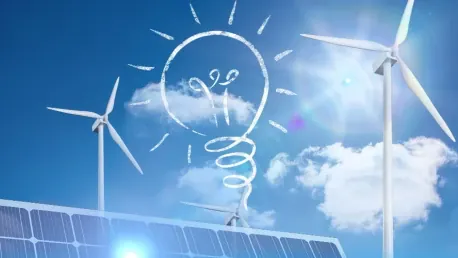When we consider the challenges faced by utility companies today, increased energy demands, integration of renewable energy sources, and the imperatives of carbon reduction are foremost among them. Against this backdrop, Nokia and Southern California Edison (SCE) have taken a monumental step by partnering to create the first private 5G Field Area Network (FAN) in the U.S. utility sector. This initiative is poised to revolutionize grid modernization by leveraging advanced connectivity, ensuring a more reliable, secure, and efficient energy supply.
Enhancing Grid Reliability and Renewable Energy Integration
High-Performance Network Infrastructure
Nokia’s deployment of 5G technology utilizes the Citizens Broadband Radio Service (CBRS) spectrum, providing SCE with a robust and secure network infrastructure. One of the most significant advantages of this collaboration is the enhancement of grid reliability. By integrating 5G’s high-performance capabilities, the network ensures stable and uninterrupted communication between various grid components, thus facilitating real-time data exchange and quick response to outages or faults.
The optimization of renewable energy integration is another crucial aspect of this network. As the demand for cleaner energy sources increases, the capacity to seamlessly integrate these sources into the existing grid infrastructure becomes essential. Nokia’s 5G technology, with its superior data-handling capacity and reduced latency, allows for the efficient management of distributed energy resources (DERs) such as solar and wind power. This, in turn, supports SCE’s commitment to achieving carbon-free electricity while maintaining grid stability and reliability.
Automation of Distributed Energy Resources
One of the standout features of Nokia’s 5G technology is network slicing, which enables the independent operation of multiple use cases on a single network. This capability is particularly beneficial for automation in managing DERs. During peak energy demands or emergencies, critical applications can be prioritized, ensuring that essential services remain uninterrupted. This level of flexibility enhances SCE’s operational efficiency and resiliency, supporting its broader goals of carbon reduction and sustainable energy management.
Moreover, automation at the grid edge, facilitated by 5G connectivity, allows for better monitoring and control of energy resources, mitigating the risks associated with intermittent renewable energy sources. With automated systems, manual interventions are minimized, which not only speeds up response times but also enhances overall system performance. As a result, the grid becomes more adaptive and capable of accommodating the dynamic nature of renewable energy generation, paving the way for a more sustainable future.
Advantages of a Private 5G Network
Accelerated Smart Grid Deployment and Enhanced DER Management
The introduction of a private 5G network accelerates the deployment of smart grid technologies, which are essential for modern utility operations. Smart grids rely on a dense network of sensors, devices, and communication channels to monitor and manage energy distribution efficiently. A private 5G network, with its superior speed and capacity, ensures that these components can communicate seamlessly and reliably, enabling real-time data analytics and decision-making.
Enhanced DER management is another critical benefit of this network. With the growing emphasis on renewable energy, the ability to effectively manage diverse energy sources is paramount. The 5G network’s scalable and flexible architecture supports advanced applications such as predictive maintenance, demand response, and energy storage optimization. By leveraging these capabilities, SCE can better forecast energy production and consumption patterns, leading to more efficient use of resources and reduced operational costs.
Improved Worker Safety and Grid Edge Automation
Worker safety is a top priority in the utility sector, and the enhanced connectivity provided by the 5G network plays a vital role in this regard. With real-time communication and data sharing, field workers can access crucial information on the go, reducing the risk of accidents and improving overall safety standards. Additionally, remote monitoring and control capabilities allow for the performance of certain tasks without the need for physical presence, further minimizing exposure to hazardous conditions.
Automation at the grid edge, enabled by the 5G network, also enhances operational efficiency and reliability. By leveraging advanced connectivity, the network facilitates the implementation of technologies such as smart meters, intelligent substations, and automated fault detection systems. These innovations contribute to a more responsive and resilient grid, capable of quickly adapting to changes in demand and addressing potential issues before they escalate.
Broader Implications and Future Developments
Setting New Standards for Utility Operations
The partnership between Nokia and SCE serves as a benchmark for future developments in the utility sector. By demonstrating the tangible benefits of a private 5G network, this collaboration paves the way for other utilities to adopt similar models. The enhanced connectivity, reliability, and efficiency provided by 5G technology present a compelling case for widespread adoption, ultimately leading to a more sustainable and resilient global energy grid.
Nokia’s involvement in the Utility Broadband Alliance (UBBA) underscores its commitment to assisting utilities worldwide in developing private broadband networks tailored to their specific needs. This collaboration highlights the potential for innovative solutions that address the unique challenges faced by the utility sector, fostering a cleaner, more reliable, and accessible energy landscape.
Promoting Cleaner and More Reliable Energy Solutions
Utility companies today are grappling with increased energy demands, the integration of renewable energy sources, and the need for significant carbon reduction. Meeting these challenges head-on, Nokia and Southern California Edison (SCE) have forged a pioneering partnership to establish the U.S.’s first private 5G Field Area Network (FAN) within the utility sector. This groundbreaking initiative is set to transform grid modernization through cutting-edge connectivity, ensuring a more reliable, secure, and efficient energy delivery system. The deployment of this private 5G FAN will support various applications crucial for modernizing the electrical grid. By deploying a private 5G network, SCE can enhance real-time monitoring and control of grid operations, allowing for quicker responses to outages and more efficient energy distribution. This partnership is not only a technological leap but also a significant step toward achieving a sustainable, resilient future in energy management. The collaboration between Nokia and SCE signifies a monumental development in addressing contemporary energy challenges through innovation and improved connectivity.









